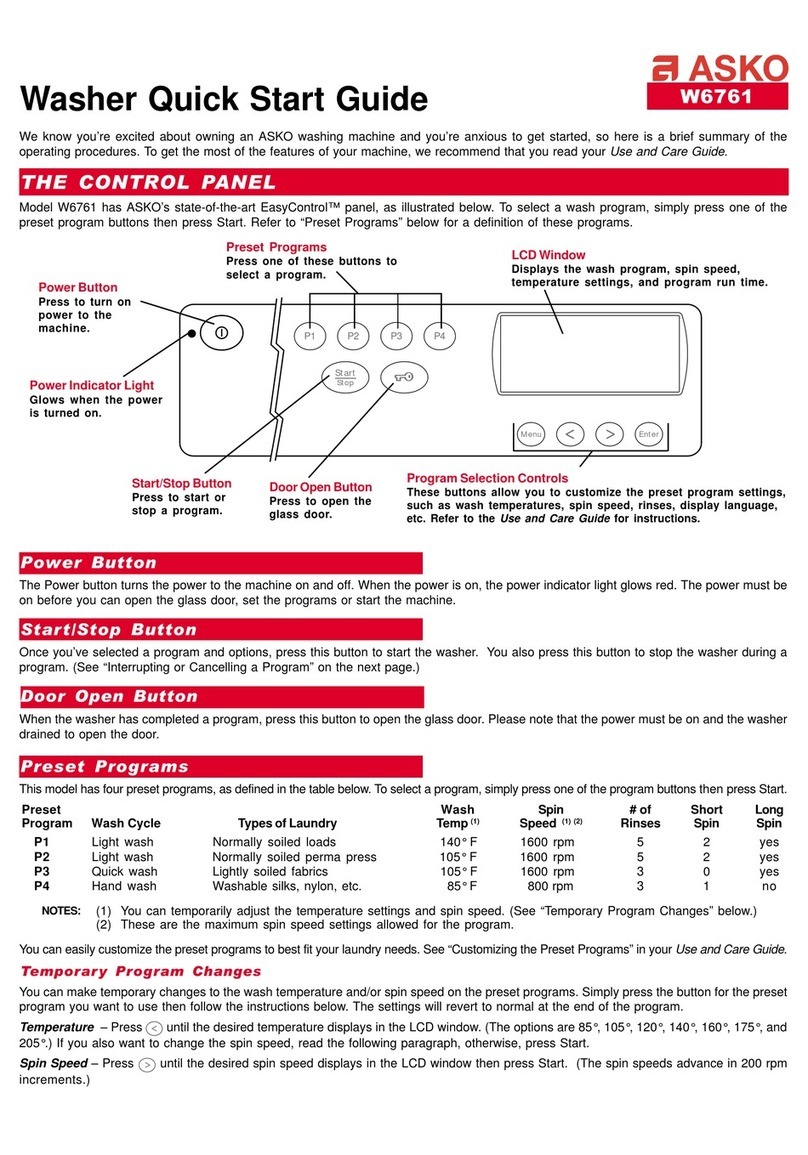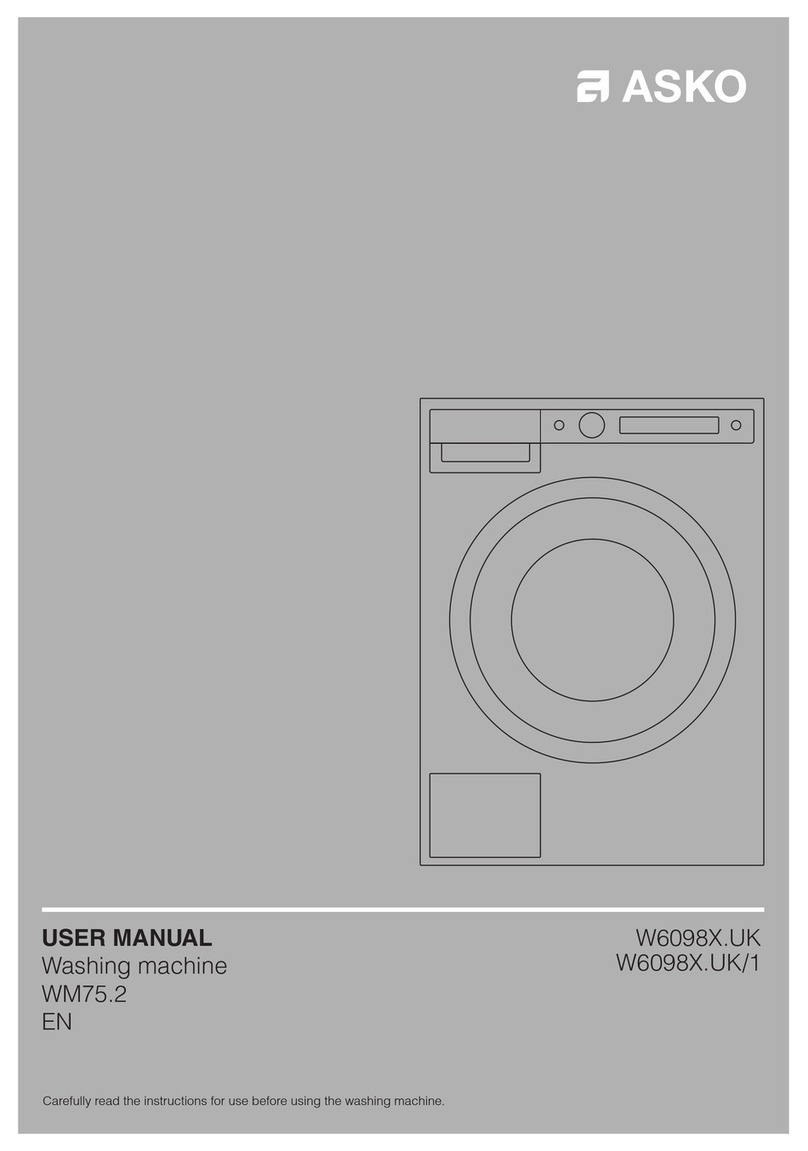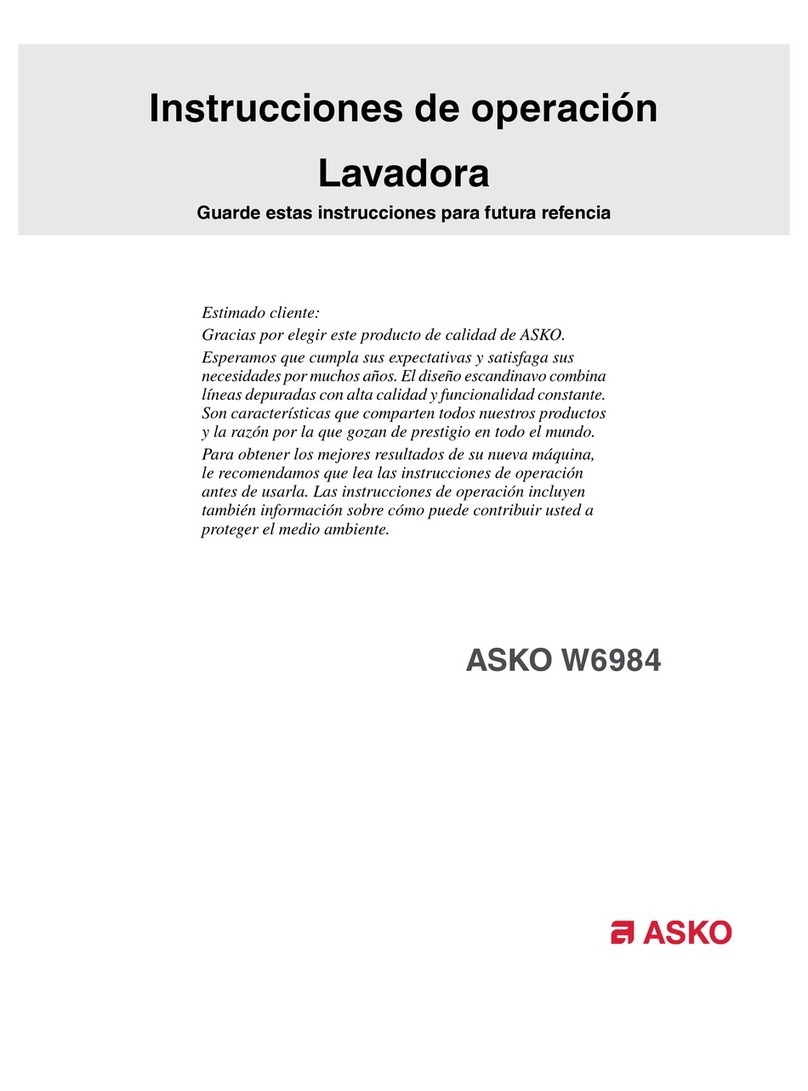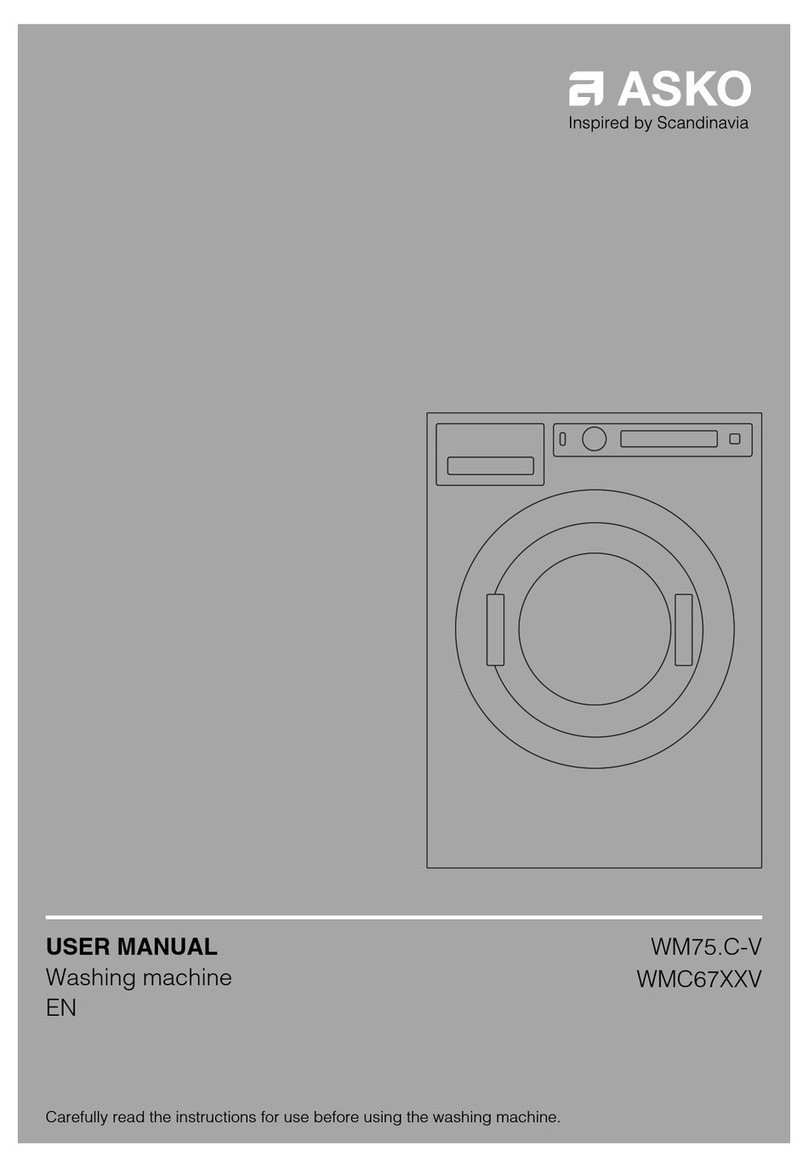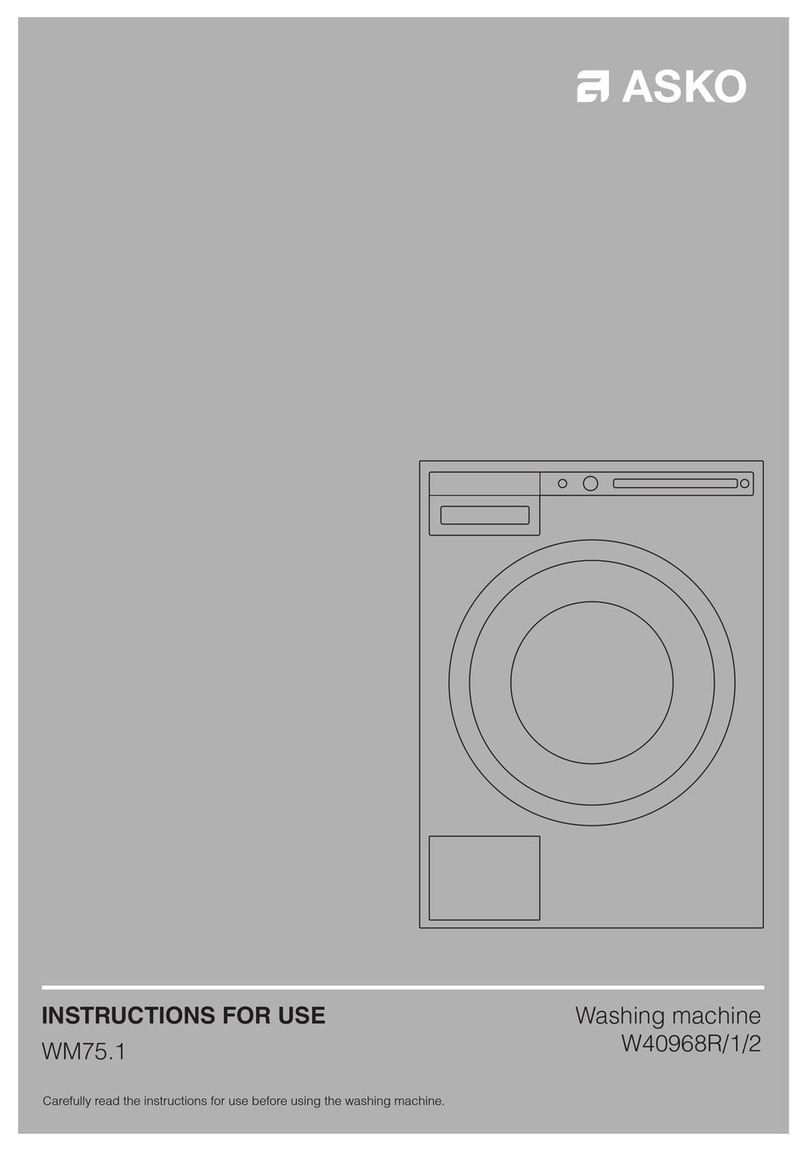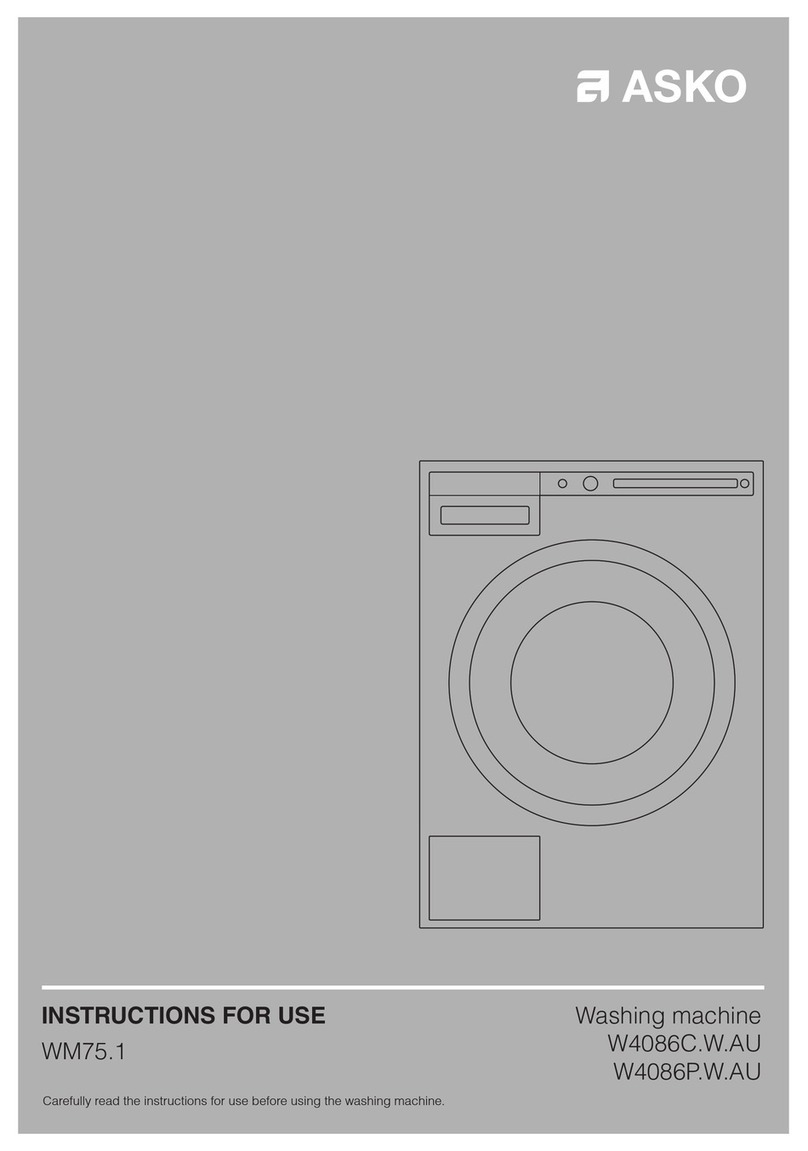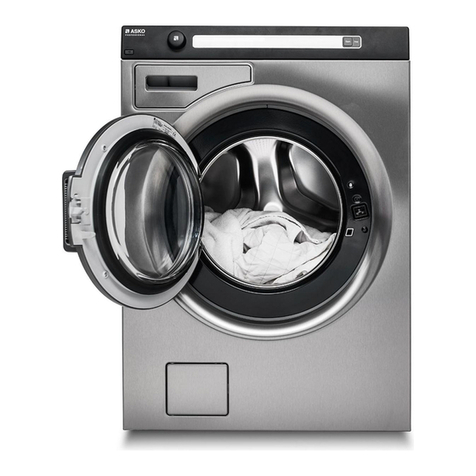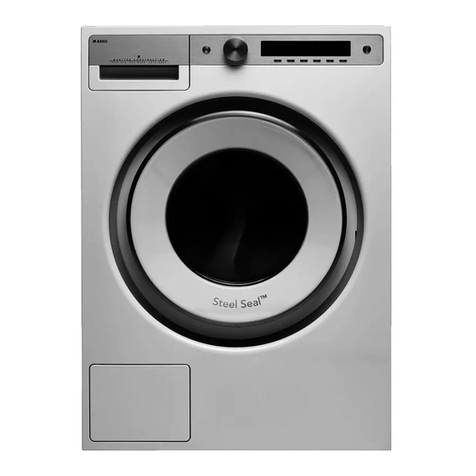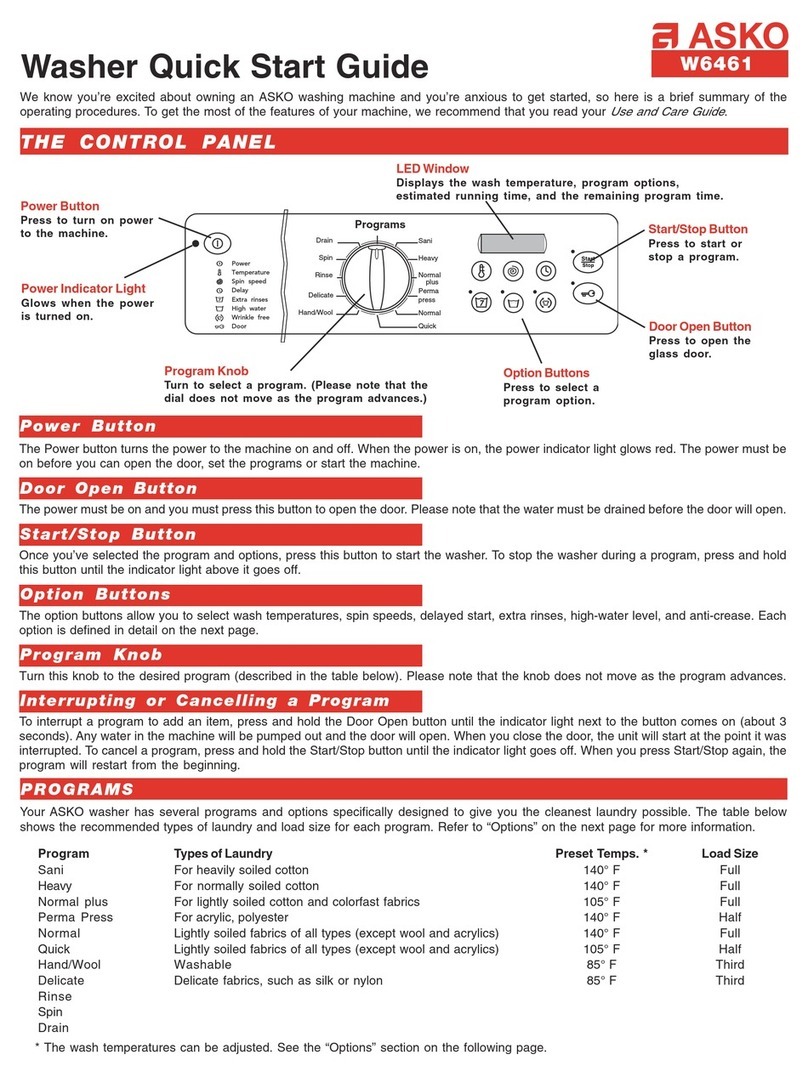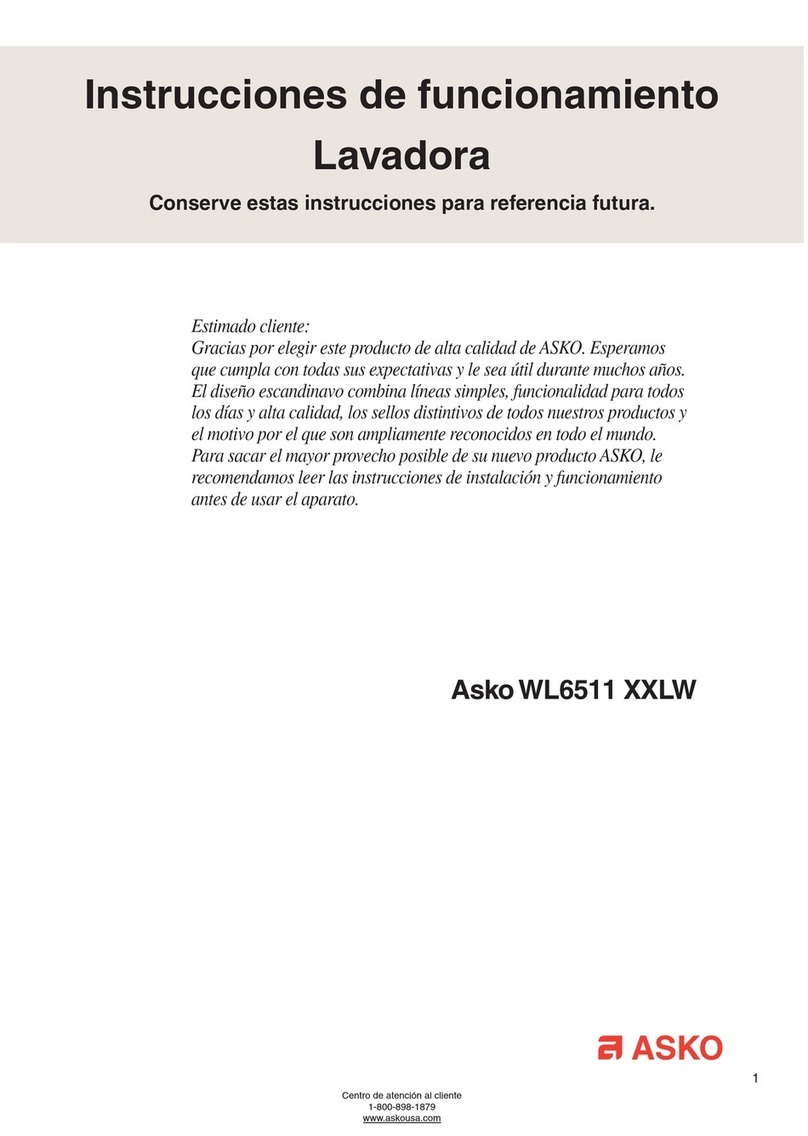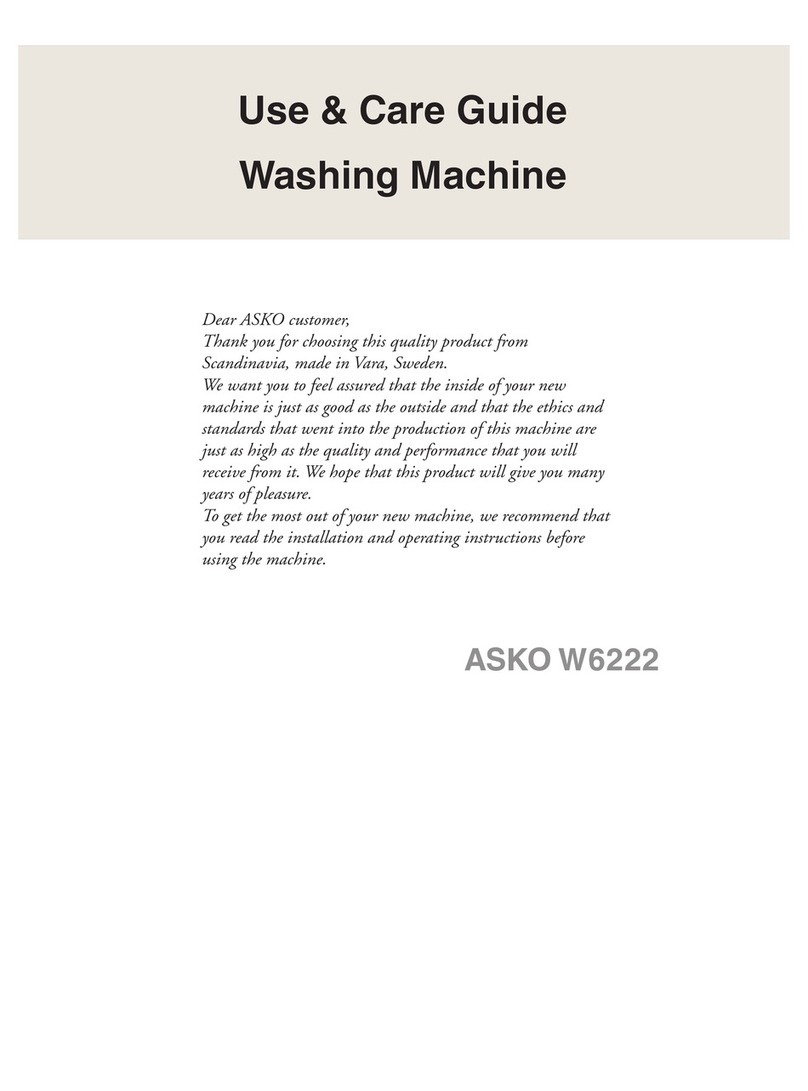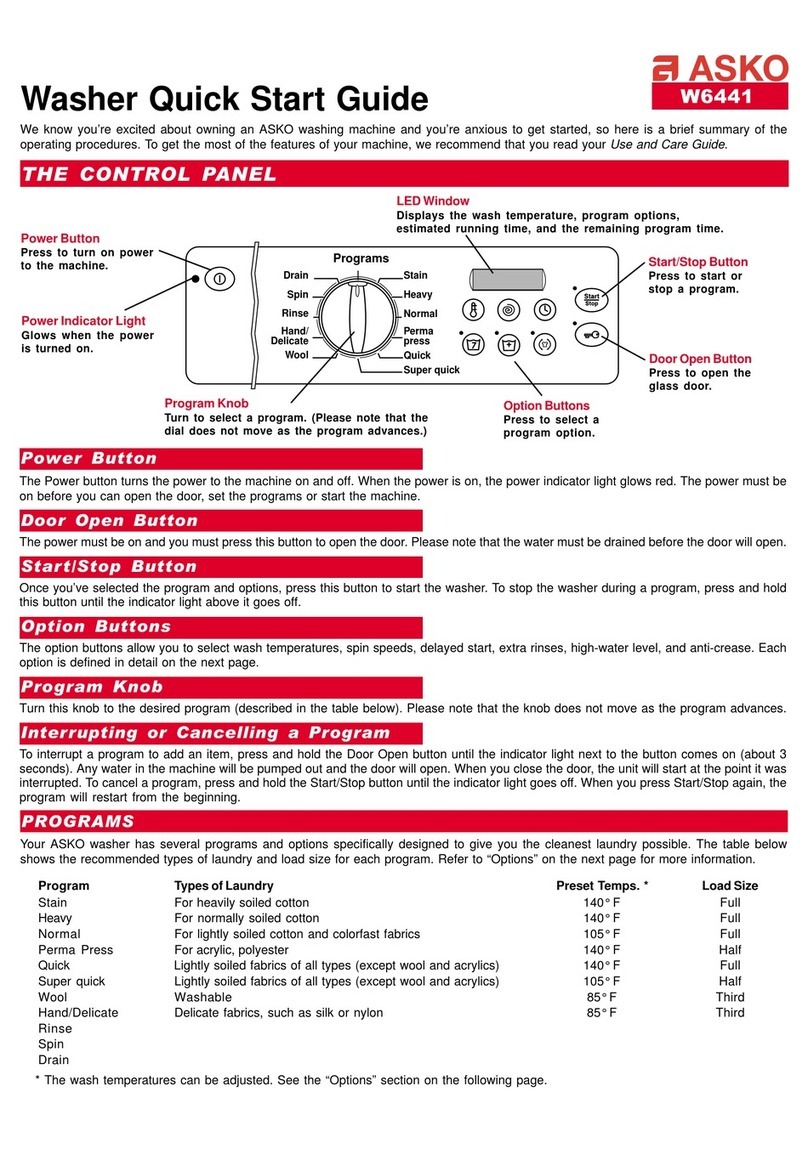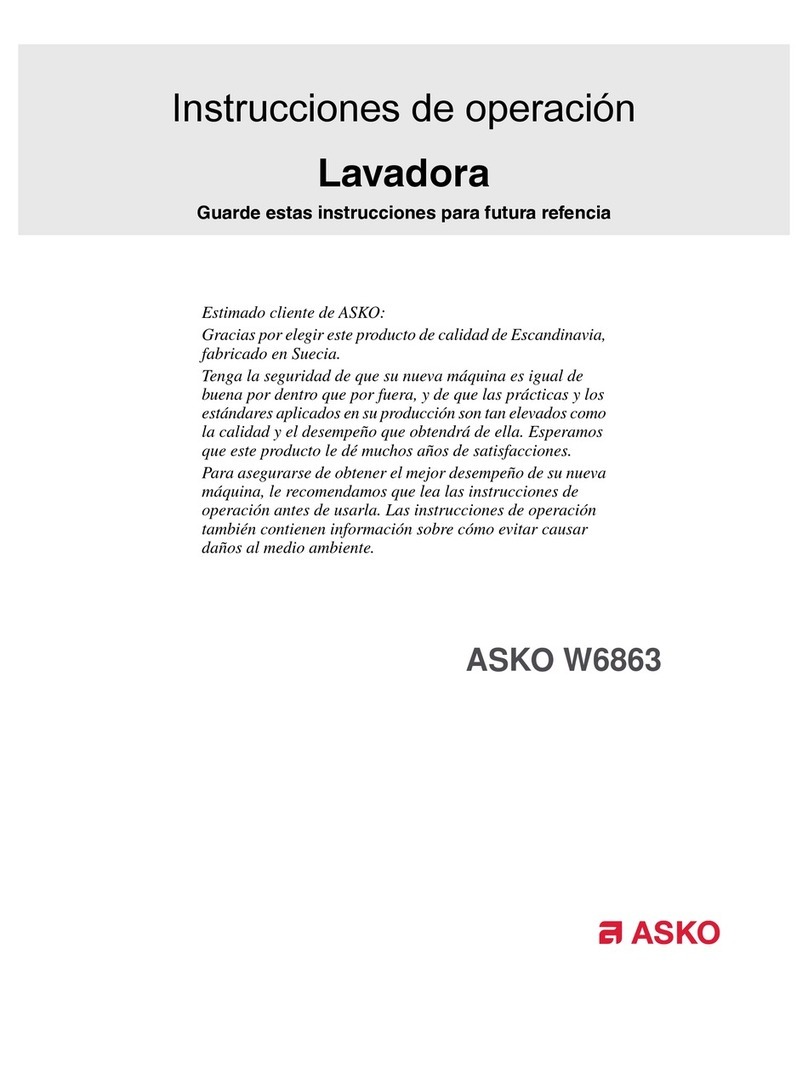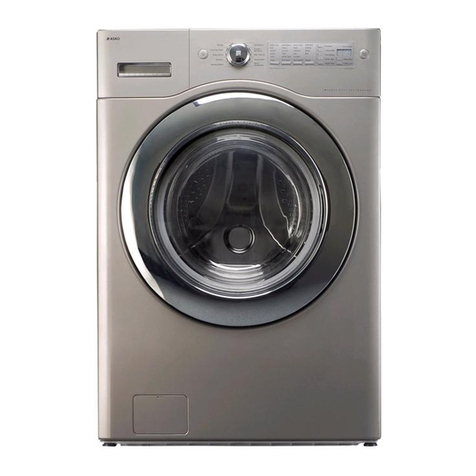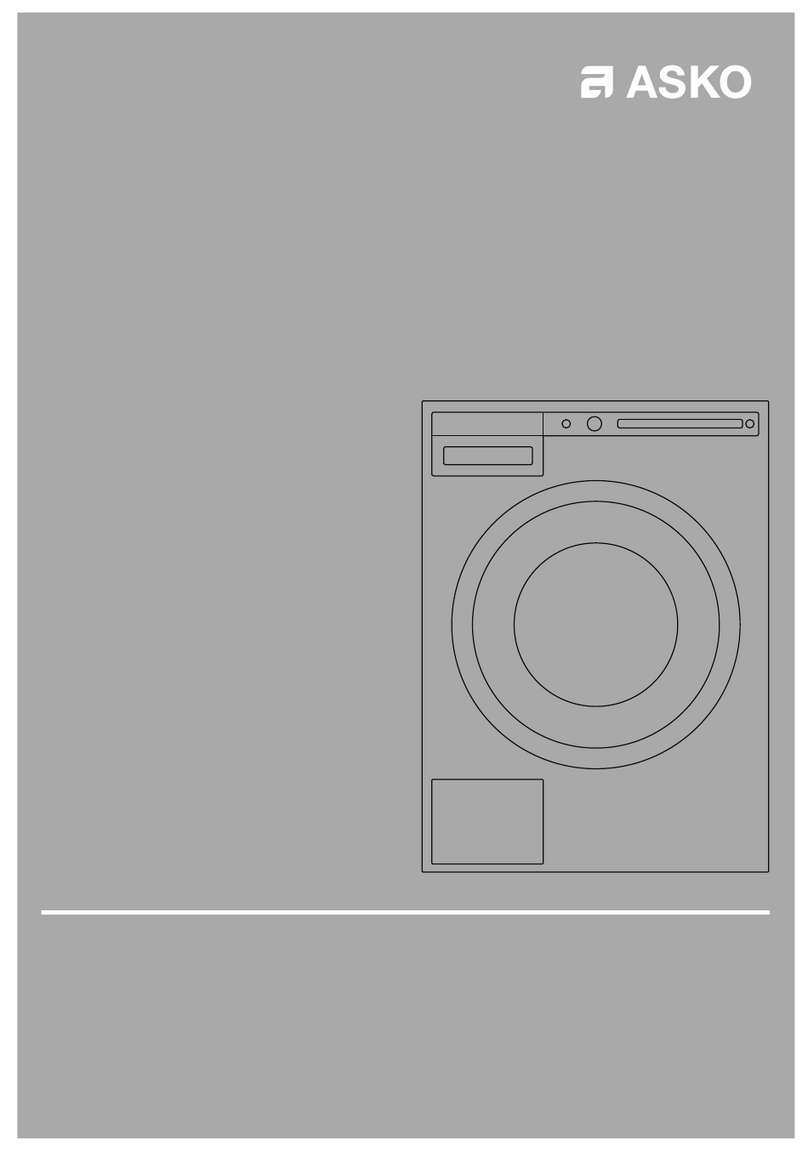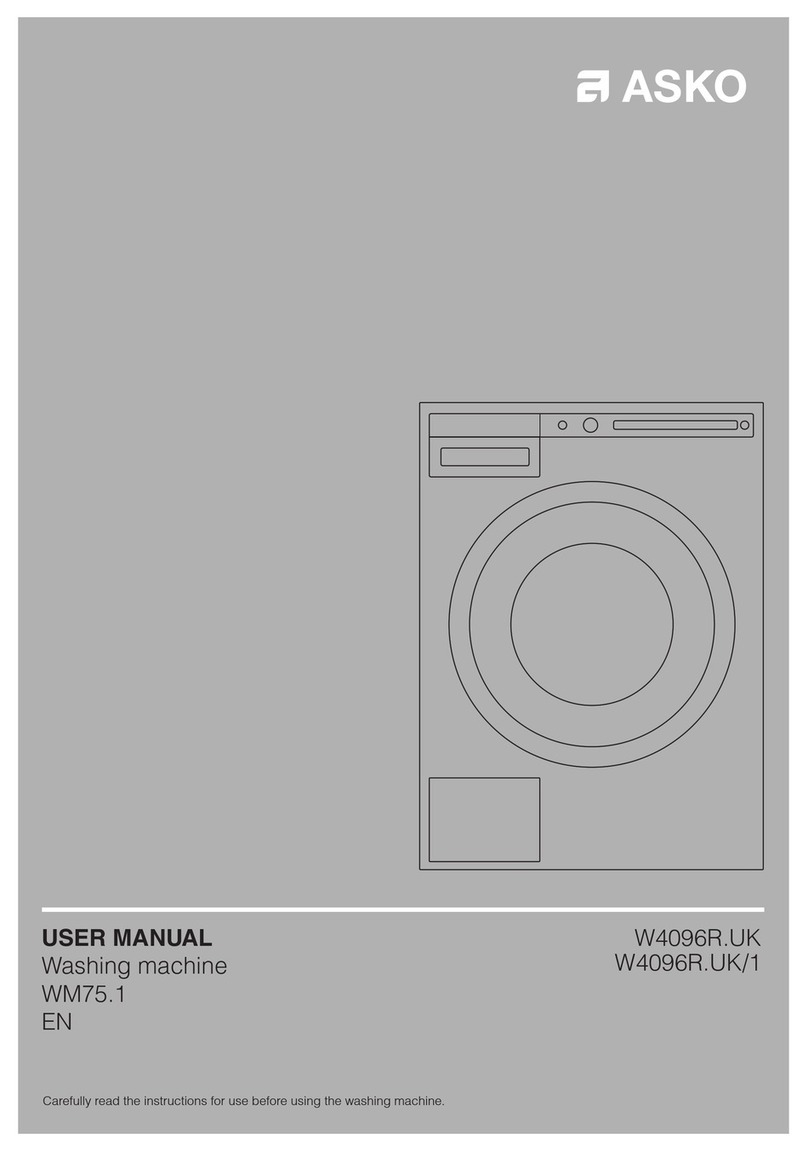Laundry labels
Look at the item’s laundry label. The table
below indicates suitable wash programmes
for various materials and wash loads.
Coloured cotton
Coloured cotton items labelled for hot
washing (60°C) should be washed at 60°C
the first time in order to remove any excess
dye. If you do not do so, there is a risk that
the colour will run. Use detergent without
bleach in order to preserve the colour of the
fabric.
Delicates
Unbleached linen
Unbleached linen fabrics should be washed
at 60°C, using detergent containing no
bleach or optical whiteners. Heavily-soiled
linen can occasionally be washed at higher
temperatures, but not too often, since the
heat can destroy the linen’s shine and
strength.
Advice and tips before washing
Here are some tips that may help you
before washing.
Sorting your laundry
Sort items according to:
• how soiled they are
• colour
• material
Clothing
• Do up zips so that they don’t harm fabrics.
• New coloured items may contain excess
dye and should therefore be washed
separately the first few times.
• Turn delicate items inside out. This
reduces the risk of burling and fading.
• Empty pockets and wash them inside out
if possible!
Laundry
labels Material Programme
Cotton, linen, white and light-coloured items. Heavy white 60°C to 95°C 1/1 drum
Cotton, linen. Dark-coloured items. Colour 60°C 1/1
Polyester, cotton/polyester, nylon. White items. Synthetic 60°C 1/2
Rayon, acetate, acrylic. Non-colourfast Synthetic 40°C 1/2
items.
Polyester, cotton/polyester, nylon. Synthetic 40°C 1/2
Coloured items.
Silk and very delicate items Synthetic 30°C 1/3
Items labelled with the IWS or Wool/Hand 40°C 1/3
Superwash mark
Laundry label symbols
